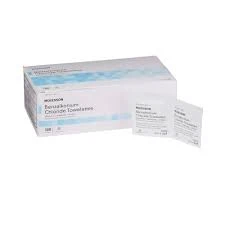different types of flocculants
Different Types of Flocculants and Their Applications
Flocculants are chemical substances that promote the clumping of fine particles into a floc, facilitating easier separation and removal from liquids in various industrial processes. These agents play a vital role in sectors such as water treatment, mining, and food processing. The effectiveness of a flocculant largely depends on its chemical structure and the characteristics of the dispersed particles it is meant to aggregate. In this article, we will explore different types of flocculants and their respective applications.
Organic flocculants are derived from natural sources or synthetic polymers and are widely used due to their efficiency and lower environmental impact compared to some inorganic alternatives.
Natural Organic Flocculants These include materials like chitosan, starch, and alginate. Chitosan, derived from crustacean shells, is favored in wastewater treatment for its biodegradability and ability to remove heavy metals. Starch, a common food ingredient, is used to enhance the sedimentation of solids in food processing. Alginate, sourced from brown seaweeds, is also employed in various industrial applications due to its biocompatibility.
Synthetic Organic Flocculants These are polymers like polyacrylamide and polyethylene oxide. Polyacrylamide is particularly versatile and is widely utilized in municipal water treatment facilities, the oil industry, and in mineral processing. It is available in various forms (anionic, cationic, or nonionic) that allow for optimal performance based on the specific application and type of particles involved.
2. Inorganic Flocculants
Inorganic flocculants are typically composed of metal salts and are commonly used for industrial applications due to their effectiveness in aggregating particles in suspension.
different types of flocculants

Alum (Aluminum Sulfate) One of the most frequently used inorganic flocculants, alum is effective in water clarification processes. It works by neutralizing the charges of suspended particles, allowing them to aggregate and settle easily. This makes alum a staple in municipal drinking water treatment plants.
Ferric Chloride Another popular inorganic flocculant, ferric chloride is frequently used in water treatment processes, particularly for removing phosphates and suspended solids. It tends to produce a denser floc compared to alum, leading to a more efficient settling process, especially in industrial wastewater treatment.
3. Composite Flocculants
Composite flocculants are increasingly being developed to optimize performance by combining the favorable properties of different flocculants. These could be combinations of organic and inorganic agents designed to maximize effectiveness across various pH levels and particle types. For instance, combining starch-based organic flocculants with metal salts can enhance ash separation in the coal industry.
4. Biopolymer Flocculants
With growing environmental concerns, biopolymer flocculants are gaining traction. These are biodegradable and derived from renewable resources, making them a sustainable alternative to traditional synthetic options. Examples include cellulose derivatives and proteins extracted from plants and microorganisms. They can effectively reduce the environmental impact associated with wastewater treatment while still achieving high flocculation efficiencies.
Conclusion
The selection of an appropriate flocculant depends on various factors, including the characteristics of the particles to be removed, the properties of the liquid medium, economic considerations, and environmental impact. As industry continues to evolve, the development of new flocculants and composites that maximize efficiency while minimizing environmental footprints will be crucial. Understanding the types of flocculants available and their applications not only aids in improving treatment processes across various industries but also promotes sustainable practices in managing waste and resources.
-
Water Treatment with Flocculant Water TreatmentNewsJun.12,2025
-
Polymaleic AnhydrideNewsJun.12,2025
-
Polyaspartic AcidNewsJun.12,2025
-
Enhance Industrial Processes with IsothiazolinonesNewsJun.12,2025
-
Enhance Industrial Processes with PBTCA SolutionsNewsJun.12,2025
-
Dodecyldimethylbenzylammonium Chloride SolutionsNewsJun.12,2025





